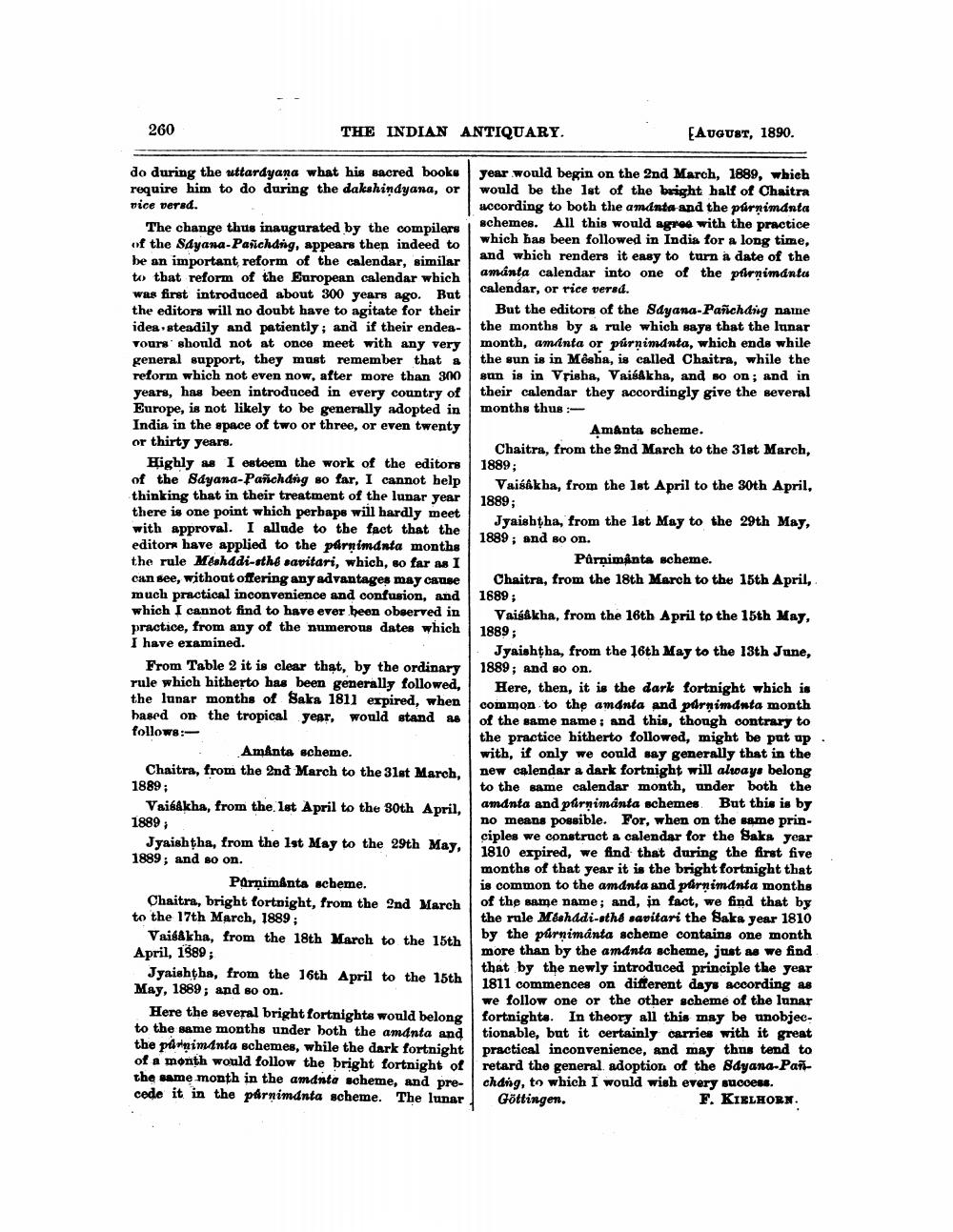________________
260
THE INDIAN ANTIQUARY.
[AUGUST, 1890.
1889;
do during the uttardyana what his sacred books year would begin on the 2nd March, 1889, which require him to do during the dakshindyana, or would be the let of the bright half of Chaitra nice verad.
according to both the amanta and the purnimanta The change thus inaugurated by the compilers
schemes. All this would agree with the practice of the Sayana-Panchang, appears then indeed to
which has been followed in India for a long time, be an important reform of the calendar, similar
and which renders it easy to turn a date of the to that reform of the European calendar wbich
amanta calendar into one of the pirnimanta was first introduced about 300 years ago. But
calendar, or rice versa. the editors will no doubt have to agitate for their But the editors of the Sdyana-Pañichdig name idea.steadily and patiently; and if their endea- the months by a rule which says that the lunar vours should not at once meet with any very month, amanta or púrnimdnta, which ends while general support, they must remember that al the sun is in Mêsha, is called Chaitra, while the reform which not even now, after more than 300 eun is in Vrisha, Vaisakha, and so on; and in years, has been introduced in every country of their calendar they accordingly give the several Europe, is not likely to be generally adopted in months thus :India in the space of two or three, or even twenty
Amanta scheme. or thirty years.
Chaitra, from the 2nd March to the 31st March, Highly as I esteem the work of the editors 1889; of the Sdyana-Pañchdng so far, I cannot help
Vaisakha, from the 1st April to the 30th April, thinking that in their treatment of the lunar year there is one point which perbape will hardly meet with approval. I allude to the fact that the
Jyaishtha, from the 1st May to the 29th May, editors have applied to the purnimanta months
1889; and so on. the rule Mshadi-sths savitari, which, so far as I
Pärnimanta scheme. can see, without offering any advantages may cause Chaitra, from the 18th March to the 15th April, much practical inconvenience and confusion, and 1889; which I cannot find to have ever been observed in Vaiáškha, from the 16th April to the 15th May, practice, from any of the numerous dates which 1889; I have examined.
Jyaishtha, from the 16th May to the 13th June, From Table 2 it is clear that, by the ordinary 1889; and so on. rule which hitherto has been generally followed, Here, then, it is the dark fortnight which is the lunar months of Saka 1811 expired, when
common to the amanta and pornimdnta month based on the tropical year, would stand as of the same name: and this, though contrary to follows:
the practice hitherto followed, might be put up Amânts scheme.
with, if only we could say generally that in the Chaitra, from the 2nd March to the 31st March, new calendar a dark fortnight will always belong 1889;
to the same calendar month, under both the Vaisakha, from the 1st April to the 30th April,
amdnta and parnimánta schemes. But this is by 1889;
no means possible. For, when on the same prinJyaishtha, from the 1st May to the 29th May,
ciples we construct a calendar for the Saka year
1810 expired, we find that during the first five 1889; and so on.
months of that year it is the bright fortnight that Porniments scheme.
is common to the amanta and purnimanta months Chaitra, bright fortnight, from the 2nd March
of the same name; and, in fact, we find that by to the 17th March, 1889;
the rule Méshadi-sthé savitari the Saka year 1810 Vaisakha, from the 18th March to the 15th
by the purnimanta scheme contains one month April, 1989;
more than by the amanta scheme, just as we find Jyaishțba, from the 16th April to the 15th
that by the newly introduced principle the year May, 1889; and so on.
1811 commences on different days according as
we follow one or the other scheme of the lunar Here the several bright fortnights would belong fortnights. In theory all this may be unobjecto the same months under both the amanta and I tionable, but it certainly carries with it great the purnimanta schemes, while the dark fortnight | practical inconvenience, and may thus tend to of a month would follow the bright fortnight of retard the general adoption of the Sdyana-Pantthe same month in the amanta scheme, and pre- chang, to which I would wish every success. code it in the parnimanta scheme. The lunar Göttingen.
F. KIELHORN.




